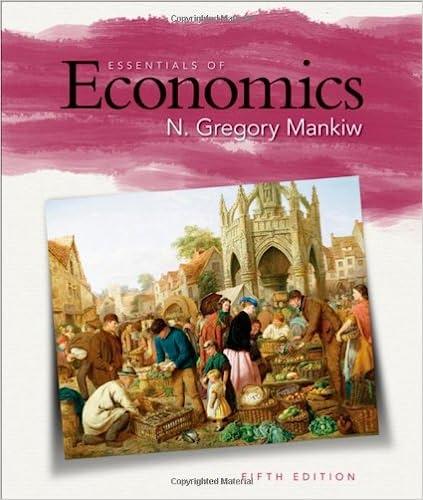I need help with question 2), thank you tutors:), the information is uploaded in this attachment.
Question 2!: The construction of PPP-adjusted exchange rates (15 points) Blanchard's section 13-1 (11-1) stresses on p. 287 (229) that it is typically a bad idea to compare two countries" GDPs by simply using the current or market exchange rate. In fact, two different problems are discussed at some length. To correct for these problems, we need articially calculated exchange rates called purchasing power parity (PPP) adjusted exchange rates. To indicate the relevance of this issue, only a few weeks ago The Economist claimed that, when expressed in PPPadjusted terms, Chinese GDP has now actually exceeded US GDP (of course, Chinese GDP per head is then still only a fourth or so of the US level). The same magazine annually publishes a very simple PPP-adjusted exchange rate known as the Big Mac index. The basic idea is this: if a Big Mac costs 6g. 53 2 in the USA and 3 in the Netherlands, then, in terms of Big Macs, the purchasing power of $ 2 in the USA is the same as that of 3 in the Netherlands. This would then imply a PPP-adjusted exchange rate of 3 / 2 = 1.5 euros per dollar. The focus box on pp. 288-289 (230-231) is meant to elaborate on the logic of such PPP-adjusted exchange rates, by developing a numerical example involving two countries (Russia and the USA) and two goods (cars and food). The table below reports, for both countries and both goods, the annual quantities consumed, and their prices in rubles (R) and dollars ($) respectively. The nal column reports the value of total consumption in domestic currency. PEAR QCAR PFOOD QFOOD Consumption Russia R 300,000 1/15 R 40,000 1 R 60,000 USA $ 10,000 1 $ 10,000 1 $ 20,000 a) (2pt) Explain intuitively that, in the case at hand, any sensible PPP-adjusted exchange rate, however calculated, must logically lie somewhere in the range between 30 and 4 rubles per dollar. Hint: Start from the logic of the Big Mac index, applied to both goods at hand separately. Blanchard notes that, with a market exchange rate of 30 rubles per dollar, we would convert the Russian consumption basket from R 60,000 into $ 2,000. This would suggest that the Russian standard of living is only 10% of the US one, which seems unrealistically low. Blanchard then goes on to say that, to improve on this answer, \"()ne way is to use the same set ofprices for both countries and then measure the quantities ofeach good consumed in each country using this common set of prices. Suppose we use US prices\" (p. 289 (23]), lSt column). b) (3pt) i) Show that, valued at US prices, the Russian consumption basket is worth $ 10,666.67 . N.B..' Blanchard reports a slightly rounded value of $ 10,700 here. ii) Show that this calculation implies a PPP-adjusted exchange rate of 5.625 rubles per dollar. c) (3pt) Show that an altemative (but equally defensible) calculation, on the basis of the same numerical data above, implies a PPP-adjusted exchange rate of 17 rubles per dollar. Hint: Think about the last sentence of the italicized Blanchard quote above. Alternatively, think about item i) of the previous question b), but then \"the other way around\". (Please turn to the next page for item a) https://www.coursehero.com/le/23418265/Resit0penMacr02014/ If you managed to get question c) right then, explicitly or implicitly, you must have used the following formula, where the subscripts R and US obviously refer to Russia and the United States: PCAR . OCAR + PHOOD . QUS pCAR . OUS CAR + PHOOD . OUS FOOD (1) It can be shown that eq. (1) can be rewritten as follows, where the symbol w is shorthand for "weight": W CAR PEAR pFOOD PCAR + W FOOD PFOOD (2a) LIS CAR . with W CAR = PUS CAR . OCAR + PFOOD . FOOD P. QUs (2b) PUS and WFOOD =1 - W CAR = PFOOD . OFS CAR . OCAR + PROD. FOOD . QUS (2c) as on d) (7pt) i) Show that you can get eq. (1) back by cleverly combining eqs. (2a), (2b) and (2c) . i) Interpret the meaning of eqs. (2a), (2b) and (2c) in words, as explicitly as you can. Hint: It may help your understanding if you replicate the numerical analysis of question c) in terms of eqs. (2a), (2b) and (2c) iii) Use your result at item ii) to explain, why your result at question c), i.e. 17 rubles per dollar, lies exactly in the middle of the 4-to-30 range established at question a). This study res shared via Cours' 5 https://www.coursehero.com/file/23418265/ResitOpenMacro2014/ Downloaded for free from S Studydrive








